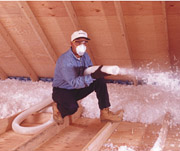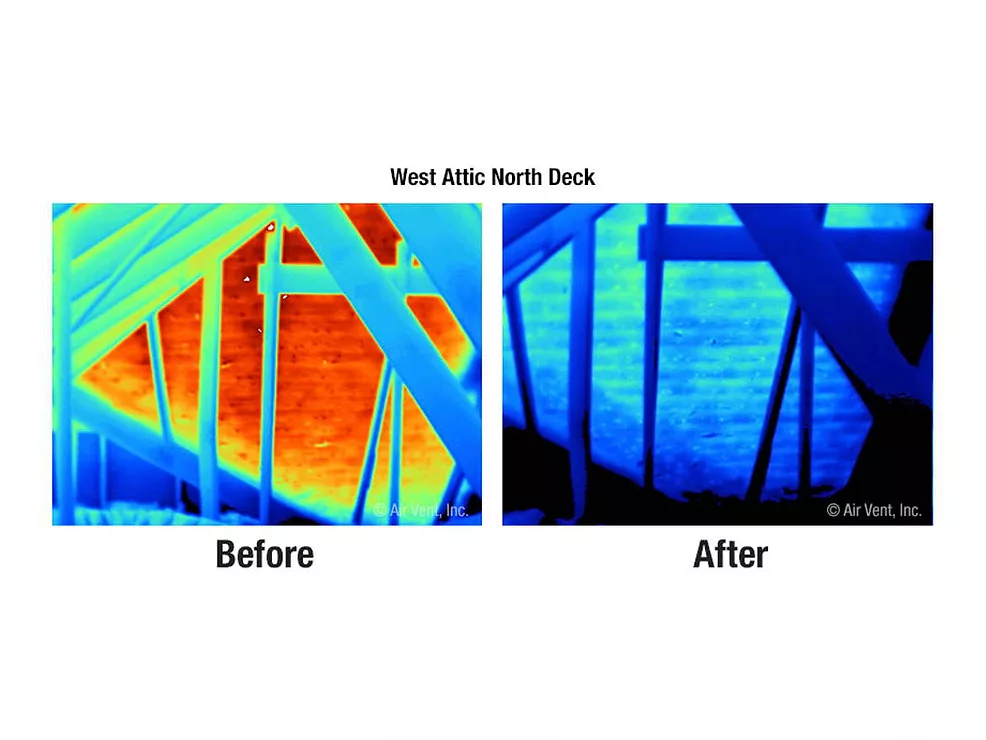Tales from the Front

Dealing with a tight labor market and competition from both giant consolidation groups and one-man fly-by-night operations are just a couple of the challenges facing professional insulation contractors these days. As the industry evolves around them, contractors are reacting accordingly to the market conditions in their area.
Help Wanted
The predicament facing Wilkinson Insulation Co. in Jacksonville, Fla., is typical. Wilkinson, established in 1942, is headed by Bill Jones, who started working there during summers while in high school. “We’re turning down a lot of the call-in homeowner customers simply because of the labor situation,” he relates.The vast majority of contractors interviewed for this article cite the labor situation as the number one problem they face. Compounding the dilemma is the fact that as the insulation industry has become increasingly sophisticated, more technical proficiency is required of the labor. That means an increased investment of time effort and resources in training workers — if you can find and hire them.
However, as sure as contractors could use more help, they also realize they need qualified labor — emphasis on qualified — and won’t be panicked into poor hiring decisions.
But let’s not be naïve; when unemployment is as low as it is now, it’s likely that you have to reach pretty far down into the labor barrel. “It’s a real problem; you’re dragging the bottom of the pool,” says Ken Davis, vice president of Insulation By Davis in Bend, Ore. Davis began installing batts as a third-grader not long after his father bought the business in 1961. With a wistful sigh, he admits that with the current situation, “You’re hiring people you probably would have taken a pass on just a few years ago. You’re also putting up with a bit more nonsense than you normally would. And guess what? They know it.”
Many insulation contractors are offering current employees recruitment bonuses as an incentive to help bring in more candidates. Hiring bonuses are common as well. Some contractors are having success using temps in certain situations, and during the summer and on weekends, students can provide some relief.
So let’s say you found some people to fill out a couple extra crews. Your management skills now become even more important. It’s likely that the new people, while they may well be adequate, are not from the A-list. How does their addition go over with the veterans on your staff? Is 20 percent of your people doing 80 percent of the work? There’s pressure on all sides, and the chemistry among employees can be a delicate thing, necessitating acute managerial adeptness. It’s a tough-enough task; that’s why a lot of contractors choose to give up work rather than assume the risks that accompany borderline hires.
Fading Issues
Most insulation contractors tell us that the locked spec dilemma that was causing no small uproar a while back is having minimal impact on their businesses today. The common explanations:
- In many markets, those types of projects are rather scarce;
- In areas where the locked spec projects do exist, current market conditions make it easy enough for contractors to avoid those types of projects without any measurable decrease in business; and
- While the number of instances is far from overwhelming, the success of some contractors in “unlocking” the specs has been a significant development — and a tribute to those contractors’ sales and marketing acumen.
That is not to say, however, that the concern over locked specs doesn’t still exist. For the contractors who continue to be impacted by it, it’s a serious issue.
Along similar lines is the material availability situation. Everyone seems to be getting all the products they need without a problem. Approximately three-quarters of all the insulation contractors we spoke with said that the period of product allocation was a “very serious problem” for their business, while another 20 percent described it as “somewhat serious.” That leaves a lucky handful of contractors who said that they never had a problem getting the products they needed.
But all contractors we spoke with report that product availability is no longer a problem so that issue seems to be a thing of the past. Also on the positive side, a great many contractors turned to alternative products during allocation. Initially, of course, it simply was an effort to get some projects completed. For some, however, it led to the development of whole new markets.

Big Fish, Little Fish
A real hot topic of late has been industry consolidation — the big guys gobbling up the little guys. While the consolidation activity has slowed a little bit recently, it might just be the calm before another storm. It might be that the big guys are going to reassess their positions, get organized and gear up for the next round.Another thing to remember — everybody’s situation is unique. A lot of insulation contracting firms are second and third generation, with a fourth generation in the wings. For other contractors, succession is not an issue, and if cashing in is in their best interests, then that’s what they should do.
And even some of the independents are cutting into the advantage of the conglomerates by getting together in co-ops, learning from the experience and seeing firsthand the benefits of banding together, while still maintaining their independence.
A common lament among contractors concerned with the consolidation movement is on a more human level. Typical story: Two insulation contractors share a market and enjoy healthy competition. They see each other around town and at trade shows and even work together at the local builders’ gatherings — they get along swimmingly. Then one day, one of the contractors joins a roll-up. Suddenly, a wall goes up and communication shuts down. They’ve gone from friendly competitors to almost enemies.
Flight-by-night
Trunk slammers? “It’s a thorn,” says Mike Delfino Jr. His company, Delfino Insulation, headquartered on Long Island, N.Y., was founded in 1960 by his dad. As a second-generation insulation contractor, he got the typical early start at age 12. Presently, the company is run by Delfino, his dad and two brothers, and he has two young sons he hopes will carry the legacy. The company, which has opened five new locations in the past five years, covers Eastern New York from Albany through Long Island, with its main thrust being residential new construction.The problem with fly-by-nighters, explains Delfino, “Isn’t the one or two houses a day that they do, it’s the six they measure. They’re out there throwing around these stupid numbers.” Then the builders and homeowners use those numbers as a benchmark.
Delfino provides this example: “We were bidding a 400-unit apartment complex. The builder calls me up to negotiate — and I know he has a fly-by-night bid. I told him, ‘I gave you a very good number.’ The builder says, ‘Yeah but this guy’s cheaper.’ So I asked him why he’s calling me. He says, ‘I don’t think he can handle it.’ So I ask, ‘You don’t think he can handle it but you want me to do it at his price? He said, ‘Yes.’”
It’s a crazy world.
The good news postscript to the story is that Delfino did get the job — at an appropriate price. Was the builder serious or was he just employing a negotiating tactic to see what he could get? It really doesn’t matter. Either way, it was up to Delfino make the case for professionalism over a lowball number. Sound familiar?
Vanquished Competitors
Although not on the same level as with the mega-corporations and fly-by-nighters, mainstream professional insulation contractors have had concerns with competition coming from lumberyards and drywall contractors. Those who did report that this had been an issue in their market all say that while it certainly was viewed as a threat, it never amounted to much and has devolved into a non-factor.Ginny Cameron of A.C. & R. Insulation Co. in Beltsville, Md., has seen three lumber yards in her market decide to get into the insulation business. A.C. & R. was founded in 1907 by Cameron’s grandfather, and she has been in the business for 23 years.
Of the three lumberyards that thought getting into installation would be a good idea, two have already backed out and the other one is struggling. Cameron cites a two-part reason for their current — and pending — demise. The lumberyards have a two-fold labor problem. They have their own difficulties finding lumber yard employees, and that just gets compounded by the fact that they’re asking these people to also be insulation installer employees. A lack of both human resources and knowledge of the business is not a promising combination.
A similar fate befell the many drywall contractors that thought they should install insulation. “We’ve done quite a bit of work for drywall contractors because they’ve come to realize that they don’t have the people to do the work,” says Cameron.
Cameron uses as an example her experience in the FS-25 market. She says she found an opportunity there because “Drywallers didn’t know the difference between SF-25 and the foil products,” she explains. “To them, foil was foil was foil. The insulation contractors know better. We’d lose jobs for which we were bidding SF-25 and they were bidding foil. You’re not supposed to use foil in an exposed application but they would do it anyway and when they got caught, a lot of people were hurt. Then they all decided, ‘You know what, when it comes to insulation specs, let’s just let the insulation people handle it.’ And SF-25 is a great market; there is money in it because it’s an expensive product. It’s probably 7 or 8 percent of our business, and it’s growing steadily.”
Commercialization
Barry Kirby is president of Priority Insulation, established in Cincinnati in 1993. The company has 25 employees and serves the Cincinnati, Dayton and Columbus markets. The company does mostly commercial work, using batts and blankets, blow-in and wet-spray applications. Kirby explains the company’s niche: “We’re specializing in our work. We’re not competing in markets with the bigger contractors.”And why does he choose to concentrate on the commercial side? Because “the residential business is such a cutthroat market,” Kirby comments. “There’s no loyalty; price is the only issue with builders and homeowners. It doesn’t pay to spend the time doing that. We’re going after the commercial retrofit market — also fireproofing and firestopping.”
This is typical of the contractors we interviewed. Wilkinson’s Jones says of the residential re-insulation market, “We’re wasting our time bidding on that. There is a considerable amount of time involved in going out to look at the house to measure it up. And people often don’t understand what they need to know about blow-in insulation. All they’re really concerned about is the dollar.” But while Wilkinson declines work in that market, it doesn’t mean the company isn’t of service to those homeowners who call in — as well as the industry itself. “Even though we can’t do the job, we try to help out by educating them as best as we can, like telling them about bag counts and inches and other things to look for.”
Cameron reports that just five short years ago, A.C. & R. Insulation was almost entirely residential. “Since then we’ve been doing more and more commercial work,” she says. “And we’ll continue to do so — but carefully, and with certain contractors.”
Back in Bend, Ore., Davis’ move to commercial work wasn’t a difficult decision. “At one time, there was a lot of retrofit work but that’s done,” he explains. “So we’re doing more new construction and commercial projects these days.”
And the timing is right for him in that regard. “We’re in a growing area,” Davis notes. We have a second downtown being developed down near the river — real prime property. Because we’re doing more commercial work, I’m considering becoming more knowledgeable on firestopping.”
Another factor that steers leading contractors to more commercial work is their relationships with their builder customers. More than a few contractors told us that they started doing commercial jobs because a good customer made a special request for them to do a commercial project.
Steady as She Goes
Talking with Barry Pearce, you get a sense of calm serenity. And you can tell by the contentment in his voice that it’s not simply the demeanor of a man lucky enough to be in the right place at the right time. Pearce founded Arrow Insulation Inc., Oklahoma City, 18 years ago. He currently has 10 employees who keep three of his five blowing machines “real busy.” “Business is very good,” he matter-of-factly states, although he can’t help tempering that remark with the comment, “Although it is down 2 percent from last year.”On the residential side, the majority of Arrow’s work incorporates the blow-in-blanket system. The company’s commercial work involves radiant barriers and radiant ceramic paints, and Pearce reports — like most other contractors — he’s doing an increasing amount of commercial projects, and expects that trend to continue.
On some of the more contentious issues, Pearce sounds like a man above the fray. During allocation times, “We never had trouble getting material,” he says. “The suppliers I use could always get it to me overnight.” Asked about the labor situation, he doesn’t evoke the desperation of many of his fellow contractors. “We’re not hurting for anybody right now,” he explains. The concern he does mention is “Insulation labor is more technical than it used to be; there’s more training involved.” Pearce also brushes aside the locked spec issue, explaining that Arrow specializes in custom work.
Summing up his situation, Pearce says, “We just stay real nice and steady.”
Even when asked about an eventual downturn, Pearce exudes confidence. “If interest rates rise too high it could slow things down but with the established people I work for — I don’t think that would hurt them too badly. And I’ve learned — at the school of hard knocks — to not work with just anybody,” he relays.
Pearce’s closing remark during our interview will also serve as the closing remark here: Follow the Golden Rule and we’ll all be blessed.
Looking for a reprint of this article?
From high-res PDFs to custom plaques, order your copy today!





